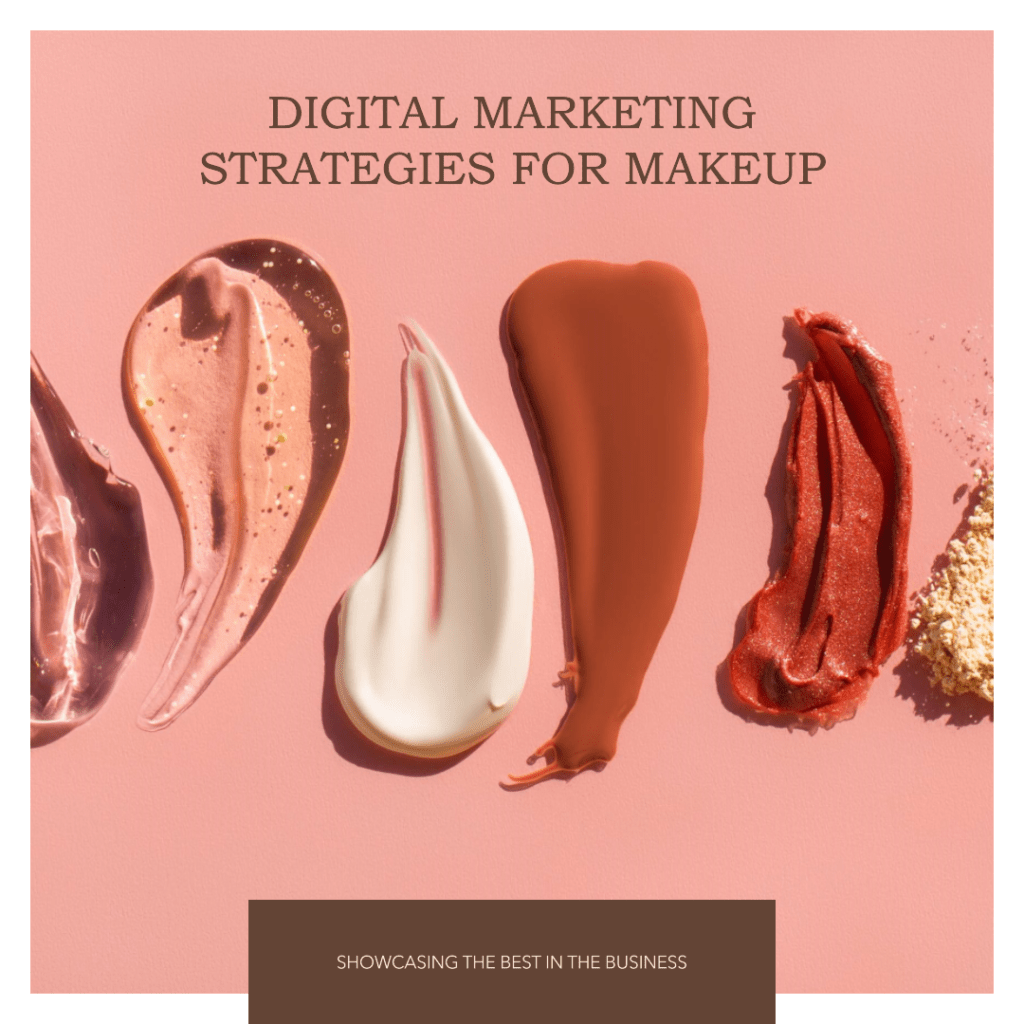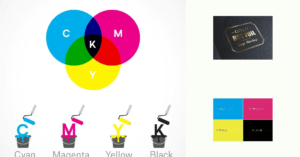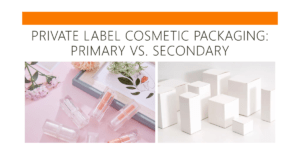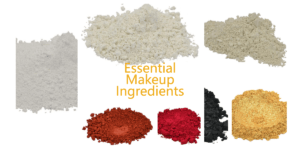Digital marketing has revolutionized the beauty industry, particularly for makeup product. In 2023, the competition is fierce, and staying ahead requires a combination of creativity, strategy, and a deep understanding of consumer behavior. If you’re in the business of makeup products, implementing the right digital marketing strategies can make all the difference in reaching your target audience effectively. In this article, we’ll explore the top strategies to elevate your makeup brand’s online presence.
Table of Contents
1. Introduction

In the digital age, makeup brands need to adopt innovative strategies to stand out from the crowd. Let’s explore some key tactics that can propel your makeup products to the forefront of the market.
2. Know Your Audience: Persona Creation For Makeup Product
Have you ever encountered content that felt like it was created just for you? That’s the magic of well-crafted personas at work. Understanding your audience is the bedrock of successful marketing campaigns, and personas are the tools that help you achieve this understanding. In this article, we will unravel the art and science of persona creation and how it transforms your approach to engaging your audience.
The Significance of Audience Understanding
Every piece of content you create, whether it’s a blog post, a social media update, or an email newsletter, is designed with a purpose – to resonate with your audience. But how can you effectively connect if you don’t truly understand who they are? Audience understanding goes beyond knowing just their age, location, and gender. It’s about comprehending their needs, desires, pain points, and aspirations.
What Are Personas and Why Do They Matter?
Personas are fictional representations of your ideal customers. They are built upon real data and insights, amalgamating demographics with psychographics. Personas provide a human face to your target audience, making it easier to relate to them and tailor your content to their preferences. They matter because they humanize your data, transforming it into a relatable story that guides your content strategy.
Steps to Create Compelling Personas
Gathering Data: The Foundation of Personas
Creating effective personas starts with data collection. Dive into analytics, conduct surveys, and analyze social media interactions. The goal is to understand your audience’s behavior, preferences, and pain points.
Identifying Pain Points and Goals: Uncovering Motivations
What keeps your audience awake at night? What are their aspirations? Identify their pain points and goals, as this insight helps you position your content as a solution and establish an emotional connection.
Naming and Visualizing Personas: Adding a Human Touch
Instead of referring to personas as “Persona A” or “Segment B,” give them names and faces. This humanization makes it easier to imagine their preferences and behaviors.
Mapping Content Preferences: Tailoring Your Approach
Do your personas prefer short videos or in-depth articles? Are they more active on social media or email? Map their content preferences to deliver what they want, where they want it.
Addressing Objections: Removing Barriers
Understand the objections or hesitations your audience might have. Address these in your content to build trust and credibility.
The Power of Empathy in Persona Creation
At the heart of persona creation lies empathy. Step into your persona’s shoes – understand their feelings, fears, and dreams. This empathetic connection enables you to create content that truly resonates.
Leveraging Personas for Effective Content Creation
Crafting Relevant and Resonant Content: Speaking to Needs
With personas in hand, you can create content that directly addresses your audience’s needs, making them more likely to engage and convert.
Choosing the Right Tone and Style: Building Rapport
The way you communicate matters. Use the tone and style that your personas would find relatable and trustworthy.
Optimizing Channel Selection: Reaching the Right Places
Not all personas hang out on the same platforms. Go where your personas are and tailor your content accordingly.
Personalization and Customization: Forging Connections
Personalized content shows that you understand and care about your audience. Use personas to segment your audience and deliver tailored content.
Common Persona Mistakes to Avoid
While personas are powerful, there are pitfalls to avoid. Don’t make assumptions, ensure your data is accurate, and regularly update your personas as your audience evolves.
Putting Personas into Action: Real-world Examples
Let’s explore a few examples of companies that successfully leveraged personas to transform their marketing strategies.
Measuring and Refining Persona-Based Strategies
Use analytics to measure the effectiveness of your persona-based strategies. Refine your approach based on the insights you gather.
3. Search Engine Optimization (SEO) for Makeup Product Keywords
In the fast-paced world of e-commerce, where the competition is fierce and the digital landscape constantly evolving, mastering Search Engine Optimization (SEO) is crucial for the success of any business. For makeup product sellers, SEO plays a pivotal role in ensuring their products get the attention they deserve in the crowded online market. This article delves into the intricacies of SEO for makeup product keywords, providing valuable insights on how to enhance visibility, drive organic traffic, and boost sales.
Understanding the Power of Keywords
Keywords are the foundation of SEO, acting as the bridge between what users are searching for and the content you offer. For makeup products, these keywords can range from broad terms like “cosmetics” to specific ones like “matte red lipstick.” Thorough keyword research using tools like Google Keyword Planner helps identify high-traffic, low-competition keywords that resonate with your target audience.
On-Page Optimization for Makeup Products
H1: Crafting Captivating Product Titles The title of your makeup product should not only be descriptive but also incorporate relevant keywords naturally. For instance, “Long-lasting Vegan Mascara – Enhance Your Lashes Naturally.”
H2: Engaging Product Descriptions Utilize your creativity to write compelling product descriptions that not only highlight the benefits but also include targeted keywords. Strike a balance between informative and persuasive content.
H2: Image Alt Text for Visual Optimization Search engines can’t interpret images, but they can understand alt text. Use descriptive alt text for your makeup product images, incorporating keywords to improve image search visibility.
H2: URL Structure and Permalinks Incorporate relevant keywords into your product page URLs. Keep them concise, readable, and reflective of the product’s content.
Technical SEO for Makeup Product Websites
H2: Mobile-Friendly Websites Ensure your makeup product website is responsive and mobile-friendly. With the majority of users browsing on mobile devices, Google prioritizes mobile-friendly sites in search results.
H2: Page Loading Speed A slow-loading website can drive users away and negatively impact SEO. Compress images, leverage browser caching, and optimize code to improve loading speed.
Content Marketing and Makeup Products
H2: Blogging about Makeup Tips Create informative and engaging blog posts about makeup tips, trends, and tutorials. This not only showcases your expertise but also provides opportunities to naturally incorporate makeup-related keywords.
H2: User-Generated Content Encourage customers to leave reviews and share photos of themselves using your makeup products. User-generated content adds authenticity to your brand and expands your keyword reach.
Building Backlinks for Makeup Keywords
H2: Guest Posting on Beauty Blogs Write guest posts for reputable beauty and makeup blogs. Backlinks from authoritative sites can significantly boost your website’s credibility and search engine ranking.
H2: Collaborations with Influencers Partner with makeup influencers for reviews and tutorials featuring your products. Their large following can expose your brand to a wider audience and improve your SEO.
Monitoring, Analyzing, and Adapting
H2: Regular Keyword Review SEO is not a one-time task. Continuously monitor and update your makeup product keywords based on changing trends and user behavior.
H2: Analyzing Traffic and Conversions Use tools like Google Analytics to track website traffic, user behavior, and conversion rates. This data guides your SEO strategies for better results.
4. Compelling Visual Content: Videos and Tutorials
Visual content is king. Produce engaging videos and tutorials showcasing your makeup products in action. This not only educates users but also builds trust and credibility.
5. Influencer Partnerships: The Power of Endorsements
Collaborate with influencers in the beauty space to tap into their dedicated followers. Genuine endorsements from trusted influencers can significantly boost your brand’s reputation.
6. Engaging Social Media Campaigns For Makeup Product
Social media isn’t just a virtual hangout; it’s a dynamic platform that can amplify your makeup brand’s voice. From Instagram’s stunning visuals to Twitter’s bite-sized updates, each platform offers unique engagement opportunities.
Defining Your Makeup Brand’s Persona
Before launching a campaign, define your brand’s personality. Are you chic and elegant or bold and adventurous? Your campaign should reflect your brand’s essence.
Setting Clear Campaign Objectives
Decide what you want to achieve with your campaign. Whether it’s increasing brand awareness, driving website traffic, or boosting sales, clear objectives will guide your strategy.
Choosing the Right Social Media Platforms
Not all platforms are created equal. For makeup products, image-centric platforms like Instagram and Pinterest might be your best bet, while Facebook can offer a more diverse audience.
Content is King: Creating Compelling Visuals
Capture your audience’s attention with stunning visuals of your makeup products. High-quality images and videos are more likely to stop users from scrolling.
The Magic of Hashtags and Trends
Hashtags make your content discoverable. Research trending makeup hashtags and incorporate them strategically into your posts to expand your reach.
Engaging Your Audience with Giveaways
Everyone loves a good giveaway. Host contests that encourage users to engage with your brand, whether through likes, comments, or shares.
Influencer Collaborations: Reaching a Wider Audience
Partner with makeup influencers. Their authentic reviews and recommendations can introduce your products to their followers.
Behind-the-Scenes Sneak Peeks
Take your audience behind the curtain. Show them the effort that goes into creating your makeup products, building an emotional connection.
User-Generated Content: Turning Customers into Advocates
Encourage customers to share their makeup looks featuring your products. Reposting user-generated content showcases real people enjoying your makeup.
Interactive Polls and Q&A Sessions
Use interactive features like polls and Q&A sessions in your Instagram Stories. This not only engages your audience but also provides valuable insights.
Storytelling through Instagram and Facebook Stories
Craft compelling stories with your makeup products as the centerpiece. Stories create a sense of urgency and encourage immediate action.
The Power of Video: Tutorials and Demos
Video content is highly engaging. Create makeup tutorials and demos that showcase your products in action.
Consistency and Scheduling: Keeping Your Audience Hooked
Consistency is key. Develop a posting schedule and stick to it. This keeps your audience engaged and eagerly anticipating your content.
Analyzing and Adapting: Measuring Campaign Success
Use social media insights to track your campaign’s performance. Analyze metrics like engagement, reach, and conversions. Adjust your strategy accordingly.
7. Email Marketing: Personalized and Targeted
Craft personalized email campaigns based on user preferences and purchase history. Email marketing remains a potent tool for nurturing customer relationships.
8. Leveraging User-Generated Content
Encourage your customers to share their makeup looks using your products. User-generated content serves as authentic testimonials and expands your reach.
9. Interactive Live Sessions and Webinars
Host live sessions and webinars featuring makeup tips, trends, and product demonstrations. These real-time interactions engage users and allow direct Q&A.
10. E-commerce Optimization for Seamless Shopping
Enhance your e-commerce platform for a smooth shopping experience. User-friendly navigation, fast checkouts, and secure payment gateways are crucial.
11. Mobile-Friendly Experience: A Must-Have
Ensure your website and campaigns are mobile-responsive. With more users shopping on mobile devices, a seamless experience is non-negotiable.
12. Data Analytics: Tracking and Adapting
Regularly analyze your digital marketing efforts. Track metrics like website traffic, conversion rates, and engagement to refine your strategies over time.
13. Paid Ad Campaigns: Reaching Wider Audiences
Invest in targeted paid ad campaigns on platforms like Google and social media. These ads can put your makeup products in front of a larger, yet relevant, audience.
14. Collaborations and Limited Editions
Partner with other beauty brands or launch limited edition products. These collaborations create excitement and a sense of exclusivity among customers.
15. Conclusion
The world of digital marketing for makeup products is dynamic and ever-evolving. By incorporating a combination of SEO, influencer partnerships, engaging content, and data-driven strategies, your brand can thrive in 2023’s competitive landscape.
FAQs (Frequently Asked Questions)
Q1. How can I identify the right influencers for my makeup brand?
A1. Look for influencers whose aesthetic and values align with your brand. Analyze their engagement rates and authenticity before reaching out. check out some tips to help you find the right influencers for your brand
Q2. What role does social media play in makeup product marketing?
A2. Social media is a powerful platform to showcase your products visually, engage with your audience, and create a loyal community around your brand.
Q3. Are there any SEO tools specifically for makeup businesses?
A3. Yes, tools like SEMrush and Ahrefs can help you research and optimize your makeup-related keywords for better search engine visibility.
Q4. How often should I update my makeup product offerings?
A4. Regular updates keep your brand fresh. Introduce new products or variations based on current trends and customer feedback.
Q5. What’s the significance of data analytics in digital marketing?
A5. Data analytics provides insights into what’s working and what’s not. It helps you make informed decisions to continually improve your strategies.






